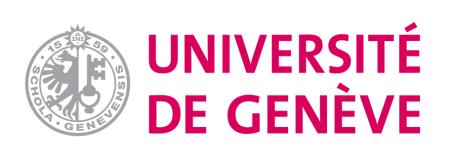
4 minute read
genevois

to the robot. 3D markers trajectories are recorded by an optoelectronic camera system (OQUS, Qualisys, Sweden). These trajectories are then processed under Matlab (R2018b, The MathWorks, USA) and used to define the constraints of a trajectory planning problem trajectories.
6) Specimen-specific kinematic chain: After the insertion of the intracortical pins, computed tomography scans of the specimens are performed. The radiographic images are acquired by CT-scan at the Unité d’imagerie et anthropologie forensique (HUG). Bone geometries (including intracortical pins and cluster of markers) are then reconstructed. In order to define the segment coordinate systems, a set of bony landmarks are identified as virtual markers following the recommendations of the International Society of Biomechanics (ISB).
7) Shoulder kinematics: Three dimensional trajectories of each marker constituting the bone pins clusters are recorded by an optolectronic camera system (OQUS, Qualisys, Sweden). These trajectories are processed under Matlab (R2018b, The MathWorks, USA) and 3D kinematics is be computed. Bone and joint 3D kinematics are then compared between each experimental condition. Goodness-of-fit parameters (i.e. root mean square error, determination coefficient) and range of motion will be included in this comparison. All computations will be performed under Matlab (R2018b, The Mathworks, USA).
Avantages
Acromioclavicular proof of concept study using the the B-Lab has following goals: 1) Previous biomechanical evaluation of acromioclavicular joint were only focused on the movements between the scapula and the clavicle. Our plateform will allow to take into consideration the whole shoulder complex and thus to better reproduce in vivo conditions. 2) The use of a robotic manipulator will allow to ensure the reproductibility of the movements induced on the humerus, and thus to have comparable situations between the different conditions tested (i.e. native joint, complete rupture and a set of surgical joint reconstructions). 3) All tests will be done will keeping surrounding structures (e.g. bones, muscles, ligaments). The fusion between motion capture system recordings (i.e. reflective markers) and CT-scan images (i.e. bone geometry) will allow to follow bone position, orientation and movement. In particular, this will allow us to analyse joint congruence.
Résultats préliminaires
The first tests of the present pilot project are under achievement. The whole feasibility of the proposed methods have been already tested on one cadaveric specimen. The related records are currently being analysed. Ten shoulders will be investigated until December 2020.
Regarding the present pilot study, the expected outcomes are:
1) a complete kinematic description of the full shoulder complex in native, complete dislocation and reconstruction conditions, 2) an advanced analysis of the acromioclavicular joint congruence in these different conditions. These results are expected to allow for identification of the surgical procedure leading to the highest stablility of the shoulder complex.


Regarding the new research program, it is expected that this pilot study will highlight the opening of new fields of investigation in:
1) the acquisition of knowledge of joint biomechanics during complex motions representative of daily activities and 2) to test surgery procedures and orthopaedic implants in in vitro conditions. Based on these first results, the present protocol will be a basis for other joints (e.g. hip, knee, elbow) investigation in the next few years. Under five years, the new experimental and numerical platform should be used both by the Department of Surgery of the Geneva University Hospitals, the Division of Anatomy of the University of Geneva, and the Kinesiology Laboratory of the University of Geneva.
In particular, it is expected that:
1) all orthopaedic surgeons of the Geneva University Hospitals use this advanced service to test and assess surgery procedures, 2) the primary suppliers of orthopaedic implants use this platform to test new implants in in vitro and functional conditions. International collaborations are also already initiated (Université de Savoie, Université de Montréal, Université de Lyon) and will ease the growth of our platform and its international visibility.
Développements
1) This pilot project is based on the collaboration between the Division of Orthopedic Surgery and Muskuloskeletal Traumatology of the Department of Surgery of the Geneva University Hospitals (Dr Holzer), the Unit of Teaching in Anatomy of the Geneva Faculty of Medicine (Dr Beaulieu), the Kinesiology Laboratory of the University of Geneva (Dr Armand) and HEPIA HES-SO.
Most of the materiel (i.e. robotic manipulator, optoelectronic cameras) have been made available through these collaborations. A key step of the research program will be acquisition equipment on a long-term basis.
2) Another key step toward the development of this research program is to transfer the methods developed in this pilot project to other applications (e.g. prosthesis implantation) and other joints (e.g. elbow, knee, hip).
3) The long term vision of this program is to have a UNIGE/HUG service for surgical device safety and efficacy testing.
Conclusion (si vous remportez un prix, comment l'utiliserez-vous pour faire avancer votre projet ?)
As this pilot project is the very first step of a large research program, we extensively need to present our project to find new supports that can be scientific or financial. It is thus a unique chance for us to participate to this HUG Innovation Day.


